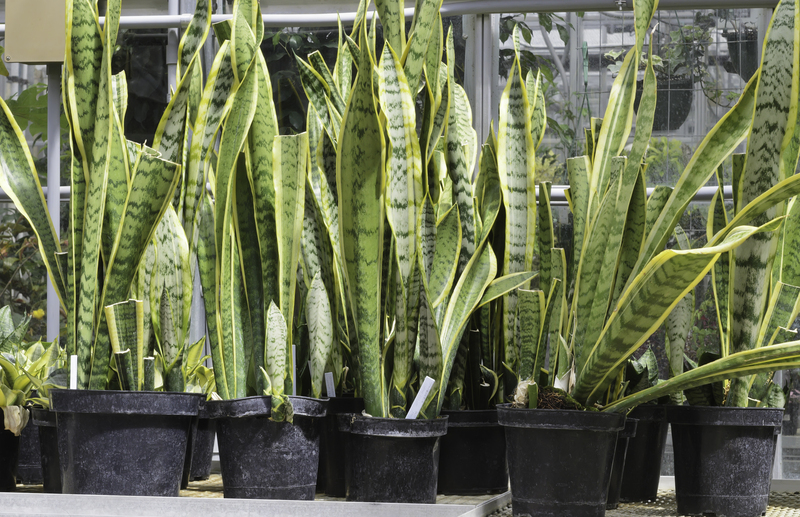Creating a Verdant Oasis with Herb Gardening
Posted on 13/08/2025
Creating a Verdant Oasis with Herb Gardening
Embarking on an herb gardening journey turns even the smallest space into a lush home sanctuary. Beyond aesthetics, cultivating aromatic herbs enhances culinary adventures, supports pollinators, and fosters mindfulness. Discover comprehensive tips and in-depth guidance in this extensive guide to creating a verdant oasis with herb gardening--no matter the scale of your space or level of experience.
Why Choose Herb Gardening for Your Verdant Oasis?
Herb gardens offer more than fresh flavors for your kitchen. They promote health, sustainability, and beauty--making them the perfect choice for anyone seeking to create a vibrant oasis at home.
- Aesthetic appeal: Lush foliage and delicate blossoms elevate garden spaces.
- Practical use: Herbs enhance meals, teas, and homemade remedies.
- Eco-friendly: Many herbs attract pollinators, boost biodiversity, and are low-maintenance.
- Therapeutic benefits: Herb gardening can reduce stress and promote well-being.
Herb Gardening for Every Setting
Whether you boast a sprawling backyard, a petite patio, or an apartment balcony, it's possible to create your own verdant retreat with herbs. Container gardens, vertical planters, and window boxes provide endless options for urban or suburban dwellers.

Top Herbs for Lush, Vibrant Gardens
Designing a verdant herb garden starts with thoughtful plant selection. While most herbs are relatively easy to grow, some truly thrive, offering robust foliage and alluring scents. Consider these popular and reliable options:
- Basil: Great for pesto, salads, and caprese. Prefers sun and frequent harvesting.
- Mint: Hardy and fast-growing. Superb for teas and desserts. Note: Plant in containers to control its spread.
- Rosemary: Woody, drought-tolerant, and aromatic. Perfect for roasting and grilling.
- Parsley: Two main types--curly and flat-leaf. A versatile garnish and flavor booster.
- Thyme: Low-growing, fragrant ground cover. Excellent in Mediterranean dishes.
- Cilantro (Coriander): Fresh leaves enliven salsas, while seeds add depth to curries.
- Chives: Delicate onion flavor and lovely purple blooms.
- Sage: Soft, silver-green foliage and robust taste--great for stuffing and tea.
Designing Your Herb Oasis: Key Considerations
Before breaking soil or sowing seeds, planning helps maximize beauty and harvest. Each herb garden oasis can be tailored to personal tastes and location.
Space & Layout
- Full-sun areas: Most culinary herbs thrive with 6-8 hours of light.
- Partial shade: Parsley, mint, and chives tolerate less direct sun.
- Containers: Ideal for patios, balconies, or windowsills.
- Raised beds: Great for improving drainage and soil quality.
Tip: Use visually interesting arrangements and cluster tall and trailing varieties for texture and color.
Soil & Nutrition
Herbs prefer well-draining soil, rich in organic matter. For containers, use quality potting mix and periodically refresh nutrients with slow-release fertilizer or compost tea.
- Avoid heavy clay or waterlogged ground.
- Test soil pH--most herbs prefer a slightly alkaline to neutral level (6.0-7.5).
- Mulch helps retain moisture and suppress weeds.
Watering & Maintenance
Most herbs dislike soggy roots. Ensure consistent watering--let the soil dry slightly between soaks. Regular, light maintenance includes:
- Pinching off flower buds to promote leaf growth (for basil, mint, and others).
- Harvesting regularly, which keeps plants productive.
- Checking for pests like aphids and whiteflies.
Starting Your Herb Gardening Adventure: From Seeds to Bounty
Turning your vision of a verdant herb garden into reality is simple with the right approach. Here's how to bring your oasis to life:
Step 1: Gathering Supplies
- Seeds or seedlings: Choose from local nurseries or reputable seed catalogs for best results.
- Containers or bed materials: Ensure adequate drainage holes.
- Soil mix and compost: Enrich with organic matter for healthy roots.
- Gardening tools: Include trowel, scissors, and a watering can.
Step 2: Sowing Seeds or Transplanting
- Direct sow: Hardy annuals like cilantro or dill can be sprinkled outdoors after frost.
- Transplant: Start seeds inside 6-8 weeks before last frost; harden off before moving them out.
- Spacing: Follow package guidance--herbs like room to thrive.
Step 3: Caring and Nurturing
- Water deeply but less often to encourage robust root growth.
- Harvest frequently. Most herbs benefit from regular snipping--which prevents flowering and encourages bushier growth.
- Fertilize sparingly. Too much can lead to lush leaves but less flavor.
Creative Herb Garden Ideas for Urban Oases
Lack of ground space shouldn't limit your herbal ambitions. Explore these inventive approaches to herb gardening for a verdant oasis in urban settings:
- Vertical gardens: Mount shelves, repurposed pallets, or pocket planters on fences or sunny walls.
- Window boxes and rail planters: Install along balconies or sills for easy access and strong sunlight.
- Kitchen herb jar gardens: Grow small herbs in decorative glass jars or recycled containers indoors.
- Hanging baskets: Suspend calendula, nasturtium, or trailing thyme for a living green curtain.
Combining herbs with flowers like marigold or calendula boosts beauty and natural pest control, further enhancing your oasis.
Seasonal Care for a Year-Round Verdant Herb Haven
Create a thriving green retreat by adjusting care for every season. With the right planning, your herb garden's bounty and beauty can last well beyond the summer months.
Spring and Summer
- Start seeds indoors or directly sow hardy annuals outdoors.
- Harvest leaves as plants become established for peak flavor.
- Watch for pests as warmth and humidity increase.
Autumn
- Pot up select herbs--like chives, parsley, or thyme--for overwintering indoors.
- Reduce fertilizing and deadhead flowers to prolong the growing period.
- Mulch perennials to insulate roots from cold snaps.
Winter
- Bring tender herbs inside--basil and cilantro will thrive in sunny windowsills.
- Water less frequently--monitor for dry indoor air.
- Snip sprigs as needed to flavor winter dishes.
Companion Planting: Herbs That Work Beautifully Together
A thoughtfully planted herb garden isn't just attractive--it's also ecological. Companion planting boosts yields and minimizes pests. Optimal pairings include:
- Basil & Tomatoes: Basil's aroma deters tomato hornworms and improves growth.
- Rosemary & Sage: Both thrive in similar, dry soil and repel certain insects.
- Chives & Carrots: Chives confuse carrot flies and enhance flavor.
- Cilantro & Spinach: Quick-growing cilantro provides light shade for tender spinach.
Tip: Avoid grouping moisture-loving and drought-tolerant herbs together to prevent stress.
Harvesting, Preserving, and Savoring Your Herbs
Perhaps the most rewarding part of herb gardening is reaping what you sow! Proper harvesting maximizes flavor and lifespan:
- Always snip with clean, sharp scissors to reduce plant stress.
- Harvest early in the morning, when oils are concentrated.
- Preserve extra bounty by drying, freezing, or infusing in oils and vinegars.
Enjoy herbs straight from your verdant oasis in:
- Salads and sauces
- Soups, stews, and roast meats
- Herbal teas and infused waters
- Natural beauty products

The Therapeutic Joy and Sustainability of Herb Gardens
Caring for a green herbal retreat is not just practical; it's deeply rewarding. Studies find that gardening reduces stress, boosts mood, and fosters connection to nature. Even a windowsill bursting with green carries the essence of a true oasis in busy city life.
- Reduce food waste: Harvest only what you need, preserving the rest for later use.
- Lower your carbon footprint: Growing your own herbs reduces reliance on store-bought, plastic-packaged produce.
- Foster biodiversity: Even small herb gardens attract pollinators and beneficial insects.
Conclusion: Transform Your Space with Herb Gardening
Transforming your home into a verdant herb oasis is attainable, worthwhile, and deeply satisfying. With the beauty, aromatherapy, and culinary delights that herb gardening brings, you'll cultivate not only healthy plants, but a richer, more harmonious life. Whether on a patio, balcony, or backyard, your herb garden oasis awaits--planted, nurtured, and enjoyed by you.
Take the first step today, and let the green magic of herb gardening infuse your life with color, fragrance, and vitality.



